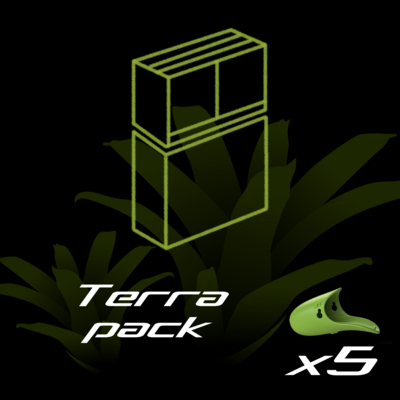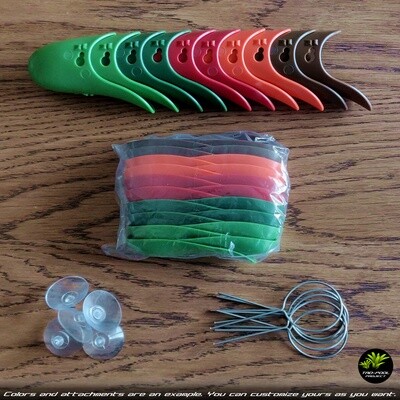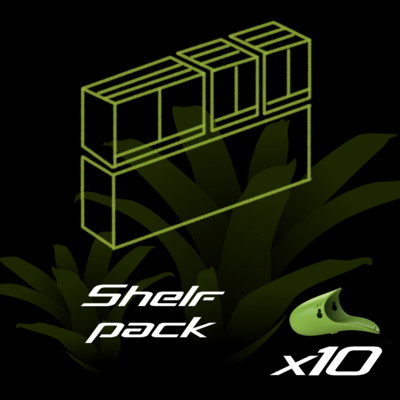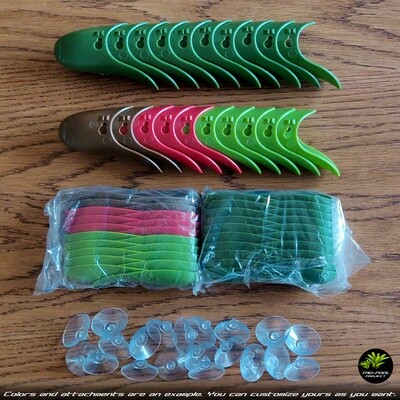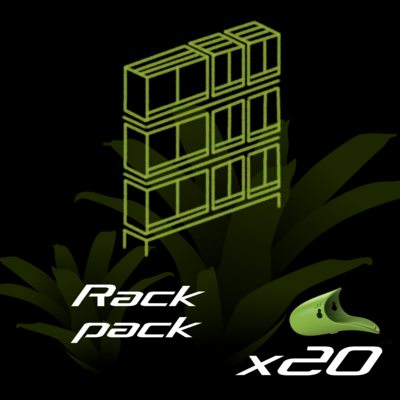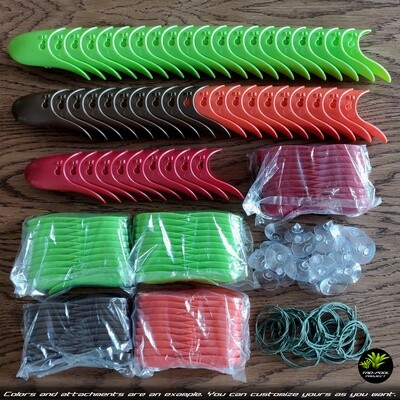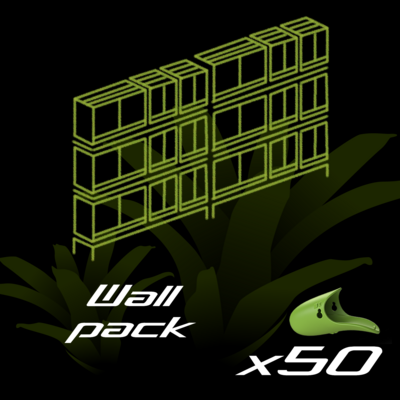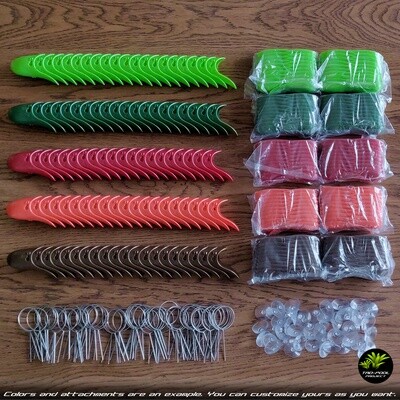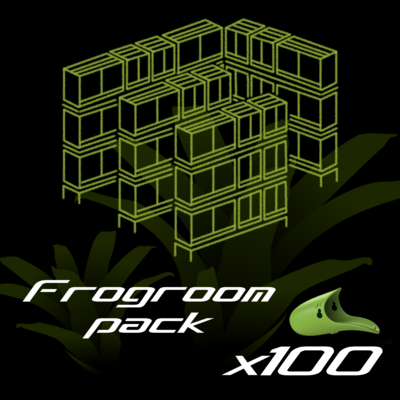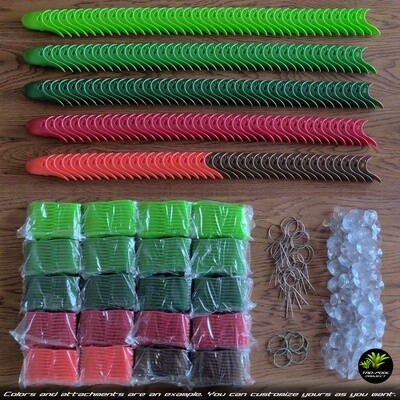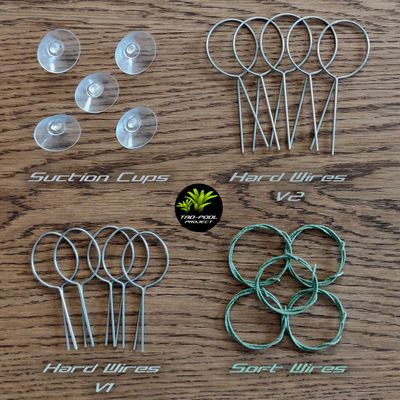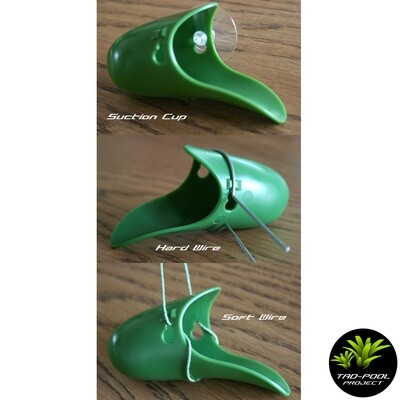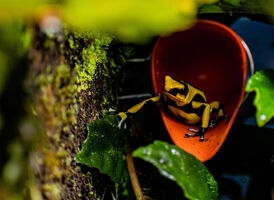

The solution for dart frog breeding is here!

Features
Injection molded
To allow them to be Frog / Egg / Tadpole safe, to have a perfectly smooth surface finish and to be preciseley colored.
3 attachment options
To be able to fix them anywhere inside your terrarium, stuck on the background, the glass or attached to a branch of your hardscape.
Optimized design
To be suitable for almost all species present in the hobby. From the smallest of Ranitomeya to large Oophaga, Tinctorius or Terribilis. The V2 fits them all!
2 deposition modes : Egg / Tadpole
- 2 Egg trays to pull out of the terrarium for external incubation. No more plant leaf cutting!
- Tilted and filled with some water for tadpole deposition.
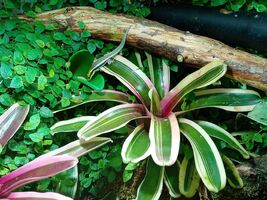
Small geckos love them too!
Delivery
Because every frog deserves a dedicated place to breed,
Tad-Pools ship worldwide! 🌍🌎🌏 :)
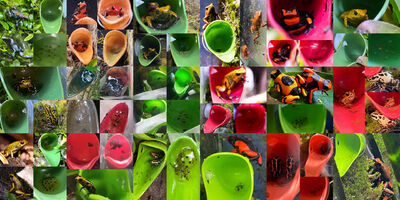

Small and large Oophaga, Ranitomeya, Dendrobates, Phyllobates and Epipedobates love them!

Why injection molding and not 3D printing?
Since I started working on this project some years ago, I noticed a big confusion among some interested people thinking that Tad-Pools were 3D printed. This came in repeatedly, and on every occasion, I took some time to explain the reasons why 3D printing wasn't the right manufacturing process to make them and why I chose injection molding from the beginning instead. As a product designer, the difference is very clear to me because I have studied and worked on this in university and past jobs, but not all dart frog breeders may know those reasons. So, as an effort to share that knowledge among the dart frog community, I want to explain my thoughts on this subject here.
With 3D printing machines becoming increasingly common, one can think that it is possible to print everything we want regardless of its application. For prototypes or decoration objects it is perfect, however, for technical products like Tad-Pools which need to fulfill several specific functions, this is not always the case. There are 4 main reasons that make injection molding the right process and 3D printing inappropriate for frog breeding products in general. Here is why:
1. MATERIALS need to be stable.
Unfortunately the most common plastics used in 3D printing nowadays (ABS, PLA, etc.) are not suitable for being in contact with living things. There can be bacterial developments in their surfaces and toxic chemical exchanges between some of them and the frogs / eggs / tadpoles as they are in contact for a good amount of time in the hot and humid environment of our vivariums. So the plastic must be food grade to be safe for the frogs in the long term. That's why Tad-Pools are made of food grade HDPE, which does not allow bacteria to grow and does not leak any chemicals into its surroundings and, by the way, it can be easily recycled nowadays too ;)
2. SURFACE FINISH needs to be smooth.
Bromeliads and other tropical plants in which frogs love to lay their eggs are flat and smooth. Some Ranitomeya even lay their eggs on the flatest surface available: the terrarium glass itself. So, a textured surface is not natural for the frogs to lay their eggs and unfortunately all 3D printing processes leave some grooves on the parts because they are made by stacked layers of material. That's why when I printed my prototypes, I had to surface treat them with acetone to obtain a smoother result. But this was just for validating the attachments and the functionality of the product with the frogs. These processes would have been extremely difficult to do on a large scale and more chemicals would have been used, and all that for a non-food grade plastic anyway... So I used this method only for prototyping purposes and went for a nice metal injection mold to achieve the plant leaf's smoothness that was required.
3. COLORS need to be as natural as possible.
In order for the Tad-Pools to blend in with the vivarium decor and appeal more to the frogs for breeding they need to be precisely colored. An injection process allows me to mix pigments to achieve unique and precise shades. Meanwhile in 3D printing there are limited filament colors available on the market, sometimes they are not very natural looking and it's impossible to mix them as well.
4. Production TIME and COST.
Each Tad-Pool takes only a few seconds to be injected, while 3D printing some parts may take hours. The cost per part for 3D prints is higher than for injected parts.
So the decision was easy to make from the beginning. 3D printing was not adapted at all, the Tad-Pools needed to be made out of injected food grade plastic to be frog safe, precisely colored, affordable and perfectly smooth ;)
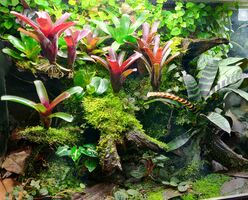

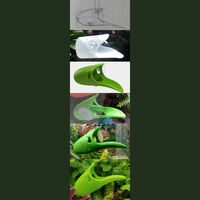
The Story of the Project
Inspiration is everywhere!
It all started in 2014. I was living in a tiny studio near Paris where I only had the space for a single terrarium. So in order to maximise the pleasure I started designing a custom one in my free time. More creative ideas then came when I realised everyone in the hobby was adapting different types of containers or cutting plant leaves to get the eggs out of the vivarium for external incubation or to offer the frogs a tadpole raising spot. So as a product designer, I started sketching ideas for a specific solution to these needs.
After building a quick mock-up using a mexican candy container ;) to test the concept, I started designing the Tad-Pool in 3D refining every curve and surface to achieve an organic shape. Then I made some more prototypes with the final shape to test with real frogs and it worked! The very first clutch finally came! It was 2016.
I then started thinking how I was going to produce them with the right material and in big quantities so that every breeder could use them. I quickly realised I needed a small plastic injection machine in order to make them perfectly smooth like a bromeliad leaf, right color and food grade to assure no chemicals were leaked to the eggs and tadpoles. But there were no machines in the French or European market that could fit my needs... I started designing an injection machine for myself but it turned out much more complicated than I had anticipated and an entire new project by itself, so I abandoned the idea. I was stuck... And the project went dormant for 4 years...
...Until one day in 2020 when a French startup launched the machine I was looking for! I immediately got in touch with them and spent my savings on the machine and the molds I had designed years ago. And after a lot of trial and error, I finally succeeded to produce the very first Tad-Pool in 2021!
I showed my results to the dart frog community and got so much positive feedback and interest that I decided to go all in, protect the intellectual property of my design and concept, register the brand and make the project a reality!
2020 and 2021 have been a lot of work both physically and mentally, between making the first users' parts with my machine during free time, as well as planning how to make Tad-Pools available for everyone at a reasonable price. So here I am today in 2022, very excited about finally launching my product, 8 years after being inspired by a bromeliad leaf :)
About Me
I'm Francisco, a 5 M's guy:
-Mexican living in France since 2012
-Musician
-Mountain Biker
-Mechanical Product Designer and
-Madly obsessed with frogs since childhood, especially dart frogs!
My creativity comes from blending my interests to create new things.
If you want to take a listen to my music, it's here:
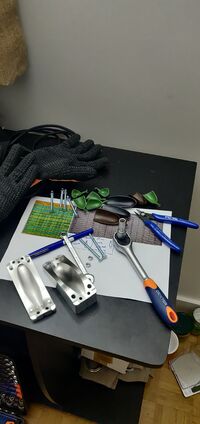
Contact
User feedback is great, so please feel free to get in touch with me by e-mail or chat, or send me your photos of your frogs using the Tad-Pools. I will be happy to interact with you in Spanish, French or English!
E-mail adress


